Ultimate Japan Travel Guide: 7-10-14 Day Itinerary for Every Traveler
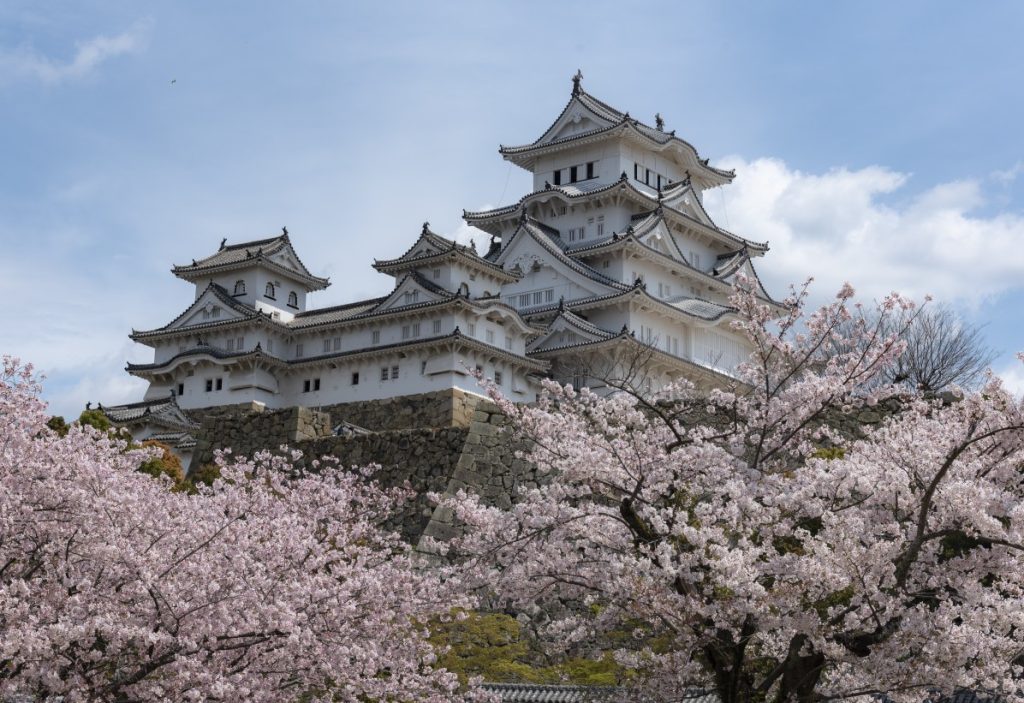
Have you ever wanted to stroll under the cherry blossom trees in the streets of Tokyo, enjoy a piping hot bowl of ramen in Osaka, or relax in a traditional Japanese onsens in Hakone with views of Mt. Fuji? A visit to Japan can be a lot to take in at first—so many cities, so much culture, and everything in between. The good part is, whether you are visiting for 7, 10, or 14 days, you can create the perfect itinerary in Japan that includes the must-see’s and the unique local experiences too. Think of this blog as your Japan trip planner—a mix of essentials, suggested itineraries, Japan travel tips, and hacks from a local. If you are finding it difficult to get a detailed Japan travel guide that answers your burning questions, you are in the right place! What’s in this Blog? Why Plan a Japan Itinerary? 7 Day Japan Itinerary 10 Day Japan Itinerary 14 Day Japan Itinerary Japan Travel Essentials Why Plan with The Tarzan Way FAQs Final Thoughts Why Plan a Japan Itinerary? Japan is certainly a country where “winging it” won’t work. With a combination of megacities, countryside trips, world-class transport, and cultural variations, a Japan itinerary can make your experience that much better. The Japan Rail Pass is an excellent way to save money when you travel long distances, if you have well-planned routes. Popular destinations, such as Arashiyama Bamboo Grove or TeamLab Tokyo, also require advance tickets. Seasonal experiences (like cherry blossoms or autumn leaves) can entirely alter your journey and must be part of a proper Japan holiday guide. It’s the thought and creation of a detailed Japan trip planner that can improve your experience whether you are looking for a honeymoon itinerary, budget loop, or food and culture journey. 7 Day Japan Itinerary If you’re in Japan for just one week, don’t panic—you’ll still get to see the best sights. Option 1: Classic Golden Route (First-Timers) Day 1-2: Tokyo – Shibuya crossing, Senso-ji Temple visit, Tsukiji Outer Market, & nightlife in Shinjuku. Day 3: Nikko or Hakone Day Trip, hot springs and views of Mt. Fuji. Day 4-5: Kyoto – Kiyomizu-dera, Fushimi Inari Shrine, & Gion (the geisha district). Day 6: Nara & Osaka – Todai-ji Temple, Nara deer park, & Osaka street food. Day 7: Departure from Osaka – Dotonbori & Osaka Castle. Option 2: Budget-Friendly If day trips aren’t your thing, consider a local city walk, visiting free shrines, and staying at hostels – you can do day trips to Ueno Park (Tokyo), Philosopher’s Path (Kyoto) & Kuromon Market (Osaka) for almost free. Option 3 – Cherry Blossom Itinerary If you’re lucky enough to visit Japan in March – April, make visiting Ueno Park (Tokyo), Philosopher’s Path (Kyoto) and Osaka Castle Park a priority, and make sure to book your accommodation 6 months in advance to do this itinerary. 10 Day Japan Itinerary With ten days, you can go deeper and go to even more places. Option 1: Classic Golden Route with Mt Fuji Days 1-3: Tokyo – Get to experience Shinjuku, Harajuku, Akihabara and a day trip to Mt Fuji (Kawaguchiko). Day 4: Hakone – Onsen, Lake Ashi, Hakone ropeway. Days 5-7: Kyoto – Temples, Arashiyama bamboo grove, tea ceremony. Day 8: Nara – Day trip to Nara Park and back to Osaka. Days 9-10: Osaka – Dotonbori food crawl and optional Universal Studio Japan. Option 2: JR Pass Itinerary (Train Lovers) Start in Tokyo → Kanazawa (samurai town) → Kyoto → Hiroshima & Miyajima → Osaka! Will pay for itself in a weekend! Option 3: Food & Culture Itinerary Focused on food markets and cultural shows: Tsukiji (Tokyo), Nishiki Market (Kyoto), street food in Osaka, cooking class or be a spectator at a sumo match. 14 Day Japan Itinerary With a couple of weeks, you can mix cities, countryside, and even an island getaway. Option 1: Traditional Japan + Countryside Day 1-3: Tokyo – Temples, anime districts, and markets. Day 4: Hakone/Mt Fuji – Ryokan stay with onsen. Day 5-7: Kyoto – Shrines, gardens, and tea ceremonies. Day 8: Nara – Half-day visit. Day 9-10: Osaka – Nightlife and street food. Day 11-12: Hiroshima & Miyajima – Peace Memorial and floating Torii gate. Day 13-14: Kanazawa/Takayama – Samurai district and mountain towns. Option 2: Hokkaido Add-On Fly north for 4-5 days: Sapporo (ramen, beer museum), Otaru (canals), and Hakodate (seafood), or get a ski resort in Niseko (winter). Option 3: Slow Travel Stay at a leisure style by spending more time in each city, day trips to the countryside, and staying at guesthouses. Good for someone who travels to work (digital nomads or someone looking to relax). Japan Travel Essentials Best Time to Visit Spring (March–April): Cherry blossoms. Autumn (Oct–Nov): Colorful leaves. Winter (Dec–Feb): Ski season in Hokkaido. Summer (July–Aug): Festivals, fireworks, but hot. JR Pass Tips Worth it if you’re covering Tokyo–Kyoto–Osaka–Hiroshima. Buy before arriving in Japan. Regional passes exist (e.g., Kansai only). Packing Essentials Comfortable walking shoes. Pocket Wi-Fi or SIM card. Reusable water bottle (tap water is safe). Cash (not everywhere accepts cards). Why Plan with The Tarzan Way Planning a Japan trip can be intimidating: train schedules, local experiences, and hidden costs add up fast. That’s where The Tarzan Way steps in. With AI-powered customization, The Tarzan Way can: Build a personalized Japan trip planner (7, 10, or 14 days). Suggest cultural experiences like tea ceremonies & sake tastings. Offer Japan vacation packages with authentic adventures. Think of it as a friend in Japan—making sure you experience the real magic, without the stress. FAQs Q. Is 7 days enough for Japan? Yes, you can cover Tokyo, Kyoto, and Osaka in one week. Q. What is the best Japan itinerary for first-time visitors? The 7-day Golden Route: Tokyo → Hakone → Kyoto → Osaka. Q. Is the JR Pass worth it for 7 days? Yes, if you’re doing multiple long-distance trips. Otherwise, buy regional passes. Q. Can I see Mt Fuji in 7
Jibhi Offbeat Travel Guide: 3–5 Days of Nature, Culture & Adventure
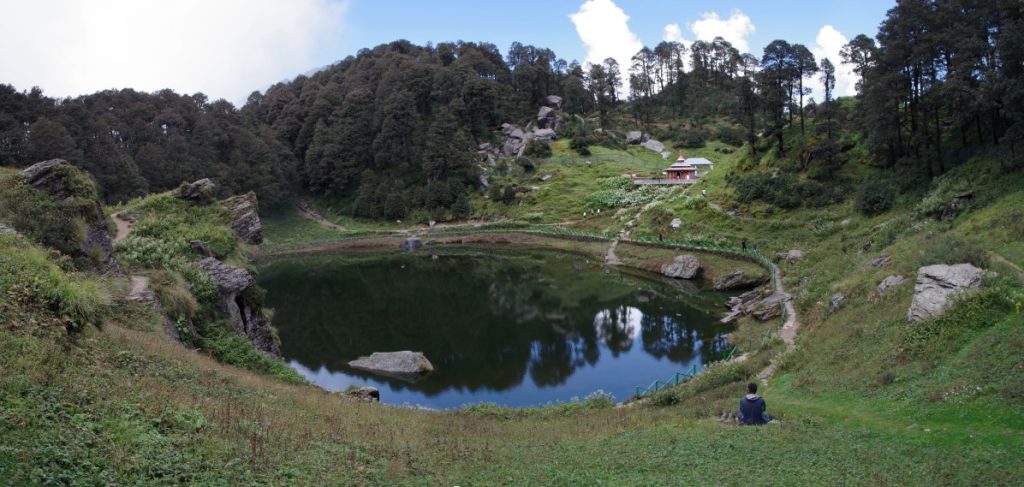
Why Jibhi Is a Hidden Gem Jibhi is a peaceful, worth-visiting village ideal for leisurely travel. It is nestled in the Tirthan Valley of Himachal. Jibhi provides immense peace, unexplored paths, and genuine mountain life in contrast to Manali or Shimla. A well-planned Jibhi itinerary aids in striking a balance between leisure, adventure, and sightseeing. Whether you are looking for a 3-day short escape, 4-day balanced holiday, or 5-day immersive trip, Jibhi has something to offer to everyone be it families, couples or backpackers. Unique Highlight: Because of Jibhi’s verdant meadows and wooden homes, it is referred to as the “mini New Zealand of India.” Pro Tip: To avoid high tourist rush and to take advantage of stunning homestay options, schedule your trip to Jibhi advance especially during the week. What’s in this Blog? Why Jibhi Is a Hidden Gem How to Reach Jibhi Best Time to Visit Jibhi Jibhi Itinerary – 3 Days Jibhi Itinerary – 4 Days Jibhi Itinerary – 5 Days Where to Stay in Jibhi Things to Do in Jibhi & Nearby Local Festivals and Food Pro Travel Tips for Jibhi FAQs Final Thoughts How to Reach Jibhi By Road: It takes 12 to 14 hours to drive 500 km via the Aut tunnel from Delhi to Jibhi. By Train: Chandigarh is the closest station; from there, take a bus or taxi. By Bus: Direct overnight Volvo buses run till Aut, followed by a 1.5-hour local cab. By Air: Take a plane to 60-kilometer-distance Kullu-Manali Airport (Bhuntar). Pro Tip: Motion Sickness is common as mountain curves can be quite steep. So, always carry motion sickness medication when driving. Best Time to Visit Jibhi Spring (March–May): If you love nature & greenery, it’s the perfect time, as there are blossoms and greenery all around. Perfect for trekking too. Summer (June–August): In the month of June to August, there’s the essence of cool climate, refreshing waterfalls to relax, and offbeat escapes. Autumn (September–November): Great time to experience the beauty of golden landscapes, clear skies, and festivals. Winter (December–February): In this snowy paradise, cozy getaways and romantic getaways are ideal for exploring. Pro Tip: Avoid the time of July–August especially if you’re traveling with kids or elderly. Because there’s a high chance of monsoon landslides. Jibhi Itinerary – 3 Days (Short Getaway Plan) Day 1: Stay at riverside homestay for experiencing real sight-seeing beauty and unwind with a bonfire in the evening. Day 2: Explore Chehni Kothi and visit the beautiful Jibhi Waterfall, and have a local Himachali lunch. Day 3: Before departing, don’t forget to visit serene Serolsar Lake and Jalori Pass. For Couples: Arrange a stargazing stroll. Spend your evenings at the riverbank cafés. For Families: Stay away from rough & lengthy hikes especially if you’ve come with children or elders. Better to opt for shorter treks like Jibhi Waterfall. For Backpackers: Stay in hostels to network with other fellow tourists. It’s a better opportunity to exchange trekking advice. Pro Tip: In Jibhi, get up early as days are shorter. Because the sun sets quickly in the valley, so plan your itinerary accordingly. Jibhi Itinerary – 4 Days (Balanced Trip Plan) Day 1: Arrival, riverside walk, and local café visit. Day 2: Day trip to Tirthan Valley, trout fishing, and village exploration. Day 3: Serolsar Lake picnic and hike up Jalori Pass. Day 4: Explore the temples and Banjar village while shopping for handicrafts. For Couples: Go to Shoja for a day trip to take pictures of the sunset. For Families: Incorporate Banjar village to experience local cuisine and culture. For Backpackers: Extend to Tirthan Valley. A must try meal is trout fishing. Pro Tip: Better to rent a comfortable scooter locally for the mobility between villages. Jibhi Itinerary – 5 Days (In-Depth Experience) Day 1: Check-in to your home-stay. Have a delicious & authentic local Himachali thali dinner to start with a local vibe. Day 2: Trek to a waterfall and explore towards the Tirthan Valley. Day 3: A full-day hike up Jalori Pass and lakeside relaxation. Day 4: Must visit Shoja, take walks for photography, and discover hidden meadows. Day 5: For Cultural immersion better to have cooking sessions with locals. For Couples: For better privacy and bonfires experience, it is ideal to go for wooden cottages. For Families: Dedicate a day for Himachali meals and local cooking classes. For Backpackers: Add the Great Himalayan National Park on your list of places to visit. Pro Tip: To visit Great Himalayan National Park, you need to add an extra night in your trip. Where to Stay in Jibhi Homestays: Suitable for genuine Himachali hospitality. Cottages: Comfortable wooden accommodations with views of pine forests. Budget Hostels: Excellent for lone travelers and backpackers. Luxury Resorts: Perfect for couples looking for comfort and privacy. Pro Tip: Make your reservations for homestays in advance. Especially during summer and New year, it’s a smart move to book in prior. Jibhi has a lot of different lodging choices, from riverside hostels to comfortable wooden cottages. Your choice must be based on what traveller you are, whether you are backpacker, traveling with family, or traveling as a couple. For Couples : Romantic Cottages: There is the availability of private wooden cottages with fireplaces and mountain-view cottages for couples. Boutique Stays: Riverside cabins provide seclusion and candlelight dinners. Luxury Resorts: Luxury resorts are ideal for a couple’s honeymoon or anniversary trips. Pro Tip: Ask for cottages with valley-viewing balconies for an unforgettable sunrise experience. For Families : Family-Friendly Homestays: Homestays having big spacious rooms with home-cooked meals and warm hospitality. Cottages with Kitchenettes: It is perfect if you extended your stays with children; Local Villager Homes: Excellent for cross-cultural interactions. It provides a safer environment to families. Pro Tip: For the availability of nearby markets and medical facilities, it is better to choose stays near Banjar or Shoja. For Backpackers: Budget Hostels: You can meet fellow travelers in the common areas and dorms. Eco-Stays: Reasonably priced mud homes or wooden huts close to
Customized Bali Travel Packages: Tailored Itineraries for Your Dream Trip
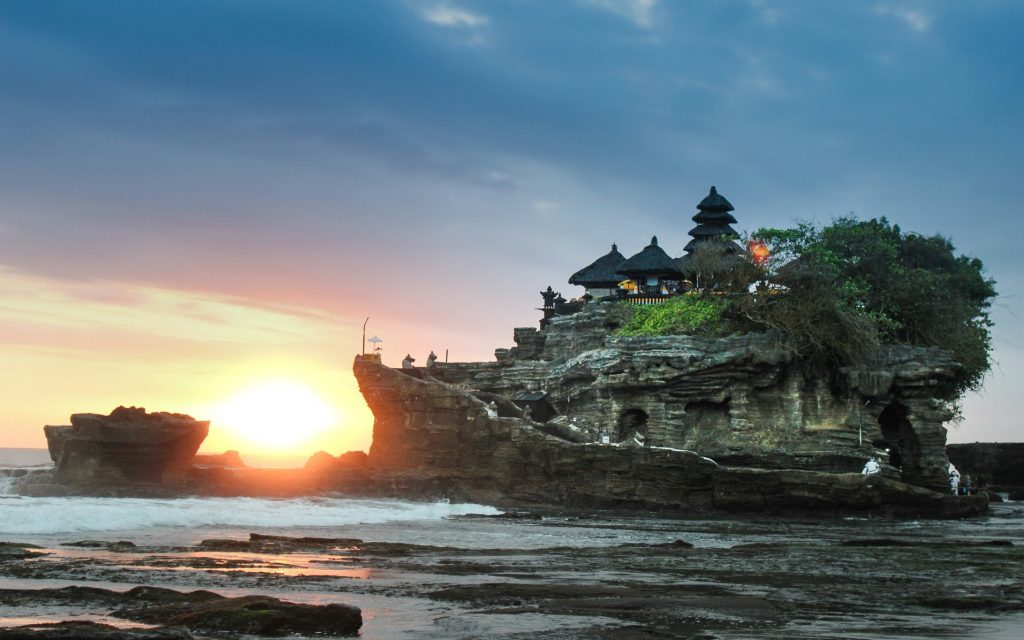
Bali is not only a place, it is a tropical heaven with terraces of rice, ancient temples, perfect beaches, and colorful culture. You want adventure, romance, fun, or you want to relax on the beach; Bali has it all. So pack your bag & plan your Bali trip. Whether it is taking a bite of coffee as one gazes at Mount Batur or walking on the white sands of Nusa Dua, this island is appealing to all kinds of travelers. There is no better way to enjoy Bali than to book personalized Bali tour packages, which are customized according to your interests, budget, and the dates of your travels. This Bali travel guide will guide you in planning the ideal escape, be it a Bali honeymoon of dreams, an adventure tour with friends and family, or a family-friendly vacation. Why Choose Customized Bali Trip Packages Tour packages are usually used as an ordinary routine, where the tours will rush to different tourism sites, leaving you with no time to experience the beauty of Bali. You are given total freedom to create your own trip to Bali with a custom Bali trip planner. And it’s the combination of AI planning and local knowledge that you get with options such as The Tarzan Way. The reason why a tailored solution is the best is as follows: Unique itineraries that are made to your wavelength- you can be a couple, a family, or a traveler on your own. The Bali trip packages are constructed according to your budget and travel preferences. Access to uncommon gems in locations not frequented by the general tourists. None of no stress when it comes to bookings or last-minute changes. Your vacation is more than a traveling experience; it is highly personal. Bali Travel Guide: Pre-visit Guide: Things You Should Know. Some of the basic travel tips before planning your Bali vacation are: Best Time to Visit Bali: Dry Season (April to October): Best to go to beaches, hiking, and outdoor activities. Wet Season (November to March): Fewer people and prices come down, but it will probably rain. Language: Language is widely spoken in tourist areas and is spoken by most people, although the official language is Bahasa Indonesia. Visa Requirements: Most countries have visa-free access of up to 30 days. Transportation: Private drivers are best when it comes to day tours; scooters are good when it is short. A Bali holiday planner can be used to plan your trip to avoid last last-minute rush. The Ultimate Guide to the Bali Travel Itinerary. Bali travel itinerary is well organized and does not lean on a single aspect of relaxation, adventure, or cultural exploration. Here’s a sample 7-day plan: Day 1-2: Ubud -The Cultural Heart of Bali. See the Tegalalang Rice Terrace to have spectacular views. See Ubud Monkey Forest and Goa Gajah Temple. Take a cooking lesson in Bali to immerse yourself in the culture. Be at Jungle Villa or the boutique resort. Day 3-4: Seminyak and Canggu Beach Vibe and Nightlife. Spend time on the fine beaches of Seminyak in the luxurious beach clubs. Surf lesson in Canggu at the most popular beaches. Take a spa and a Balinese massage. Shop in trendy coffee and local shops. On Day 5: Adventure Day Energetic mountain Batur hiking at sunrise. White-water rafting on the Ayung River. Snorkel or dive in Amed or Menjangan Island. And On Day 6-7: Nusa Dua and Uluwatu- Romance and Relaxation. Rest on the gorgeous beaches of Nusa Dua. Uluwatu Temple has the best cliff views and a performance of the Kecak dance in the evening. Finish your visit with a romantic seafood dinner at Jimbaran Bay- ideal when you are on a Bali honeymoon itinerary. Bali Honeymoon Packages All Inclusive Bali is a very romantic destination in the world, hence suitable for honeymoons. All-inclusive Bali honeymoon packages have allowed you to relax in luxurious ways without thinking about the logistics. This includes: Ocean or jungle view villas of privacy. Couples and romantic spa treatments. Candlelit beach dinners and sunset cruises. Individual one-day tours with only the two of you. Through a professional Bali travel planner, you can make sure that your Bali honeymoon is totally stress-free and unforgettable. The Best Things to do in your Bali Vacation Guide. Cultural Exploration: See the ancient temples such as Tanah Lot, Besakih, and Tirta Empul. Watch a Balinese folk dance. Adventure and Nature: Excursion to waterfalls such as Sekumpul or Gitgit. Snorkel or scuba dive in crystal waters. See the adjacent islands, like Nusa Penida. Wellness and Relaxation: Join a yoga retreat in Ubud. Have refreshing spas with natural Balinese oils. Shopping and Food: Buy in the Ubud Art Market or Seminyak boutiques. Enjoy street food and dining. With a carefully designed Bali tourism guide, you will be guaranteed the appropriate combination of culture, adventure, and relaxation. Types of Bali Tour Packages Adventure Packages Perfect for the adventure traveler seeking to hike volcanoes, scuba-dive in colorful reefs, and visit off-the-beaten-path destinations. Family-Friendly Packages Invites activities that are kid-friendly, such as water parks, easy hikes, and beach fun. Bali Romantic Honeymoon Packages Ideal for couples who want to stay private, have luxury, and feel romantic. Cultural Immersion Packages Invest in discovering Balinese culture by taking cooking lessons, making temple visits, and exploring with the locals. The Tarzan Way lets you combine and customize these themes in order to build a Bali holiday planner that fits your travel way of life. Reasons to hire a Bali Tour Guide. Bali has many local tour guides who can make your trip look more than extraordinary. They provide: Local information about secret locations. Easy maneuverability. True cultural experiences and narration. Linguistic and logistical assistance. The Tarzan Way increases your Bali experience. We will make a combination of the use of technology and the human touch to offer genuinely personalized Bali tour packages. This is why tourists believe in us Selected Itineraries: Curated by AI and locals to your taste and budget.
Affordable Singapore: Experiential Travel Packages Under $1000
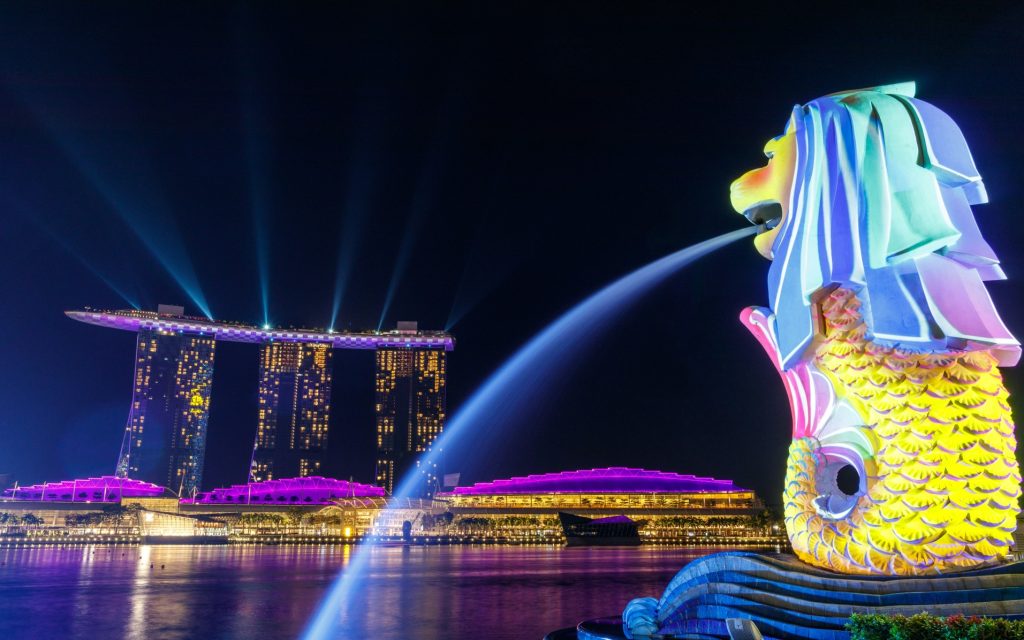
Singapore is a highly vibrant and captivating place in Asia with a rich culture, futuristic architecture, and unlimited entertainment. From vibrant street food stalls and lush gardens to thrilling theme parks and dreamy romantic getaways, Malaysia offers something special for every kind of traveler. Whether you are preparing a vacation trip to Singapore, a romantic Singapore honeymoon trip, or a family vacation, you do not have to spend a lot of cash to savor what this island country can offer. This Singapore travel guide will guide you through the process of experiencing the magic of Singapore on a budget, the best Singapore tour packages, tips to make an affordable itinerary, and how to maximize your trip under 1000$ Why Experiential Singapore Trip Packages? The majority of the Singapore trip packages are centred on normal sightseeing and only the main tourist attractions, such as Marina Bay Sands and Universal Studios, are included. Nonetheless, an experiential travel package is not just another part and parcel, but it is what gives you local, cultural, and significant experiences that, in a way, would embrace you with the heart and soul of the city. Through the correct Singapore tour operators, you can have fun in: Private food takes a tour of local hawker stalls with a local guide. Northern Exposure- studying Peranakan culture via cooking classes and heritage tours. Environmentally friendly bicycle tours over green woodland trails and island reserves. Nature adventure and night safaris. Romantic yacht trips – ideal for couples on a Singapore honeymoon package. Experience Travel will see you not just visually tour Singapore, but experience the culture of Singapore at affordable costs. How to plan a Singapore vacation for less than 1000$ It might seem difficult to plan a holiday trip to Singapore and spend less than 1000 Dollars, but it can be done with lots of planning. Below is a step-by-step Singapore vacation guide: Book Priced Tickets in Advance. The major part of your traveling budget is often flight tickets. Book at a minimum of 2-3 months and use price alerts. Take into account low-cost air companies such as AirAsia, Scoot or Jetstar. Go in the middle of the week and get the best prices. Traveling Pro Tip: The off-season in Singapore is April, May, September, or November, so by booking at this time of year, you will save a lot. Select Cost-Efficiency Accommodation. Singapore has a variety of accommodations: Budget hostels and capsule hotels: Excellent in the case of solo travelers. Boutique hotels: Ideal in a couple of hotels where you find comfort at a low cost. Airbnb stays: Suitable when there is a family or a group. Price range: $25-70 per night, so you have lots of space in your budget to experience. Select the Right Singapore Tour Packages. Looking at Singapore holiday packages, look at packages that: Such attractions as Gardens by the Bay, Marina Bay Sands, and Sentosa Island should be mentioned. Provide free or reduced activities such as walking tours of the city. It can be customized to your prices and dates of travel. Designed trip packages to Singapore can be booked through The Tarzan Way, where you can get the services of local experts and artificial intelligence to make sure it is affordable and fully personalized. Top Attractions to Include in Your $1000 Singapore Travel Itinerary Here’s an approximate Singapore travel guide that balances both attractions and the lesser-known places, and it still does not make it too expensive. Day 1: Arrival and Marina Bay Exploration Unpack in your hotel and visit Marina Bay Sands to have views. Visit the Merlion Park and have an evening walk in the bay. Don’t overlook a free light and water show, Spectra, in Marina Bay Sands. Day 2: Street Foods and Culture Begin in Chinatown with temples and local markets. Visit Little India and Arab Street, which is a lively cultural destination. Take a Singapore tour with a food tour guide to explore the real hawker foods such as laksa, satay, and Hainanese chicken rice. On Day 3: Nature and Adventure Visit Gardens by the Bay (outdoor gardens are free of charge). The afternoon on Sentosa Island – experience some of the free attractions at Palawan Beach. Evening Night safari adventure in order to have a unique wildlife experience. And on Day 4: Exploration and Departure to the locality Do a free walking tour of the historic areas of the city. Shopping at Bugis Street Market. Have a farewell local meal. This travel budget will help you to keep your Singapore holiday within 1000 $, including accommodation, attraction sites, and meals. Romantic Singapore Honeymoon Packages Singapore is an ideal destination, which can be termed a romantic vacation, in which couples can take advantage of the luxury and the artistic experiences. You need not waste a lot, as you explore romantic locations with Singapore honeymoon packages. Romantic scenes to be delighted with: Pacific, Cruise takes Sunset around Marina Bay, in a yacht. The dinner in Gardens by the Bay with Supertree Grove view is privatized. The couples stay in the costly hotels. Walking with hand-holds on the Clarke Quay walk. Made-to-order Singapore honeymoon tourism, such as The Tarzan Way, enables you to combine the high-end experiences and the cost-effective activities to give you the ideal mix of romantic and action-oriented experiences. Why Work With Singapore Travel Agents and Tour Operators Booking through trusted Singapore travel agents or tour operators in Singapore comes with several benefits: Local Intelligence: Insight with the local, where to visit, where to eat, and then there are the secrets of the locals. Cost Savings: Access to exclusive discounts on Singapore vacation packages and attractions. The No Stress Planning Process: No multi-tasking is required to make various bookings that it is being made on behalf. Exceptional Travel: It has created itineraries specifically in accordance with your preferences and means. With websites such as The Tarzan Way, you are able to get personalized packages for your Singapore trip and be sure of a hassle-free experience
Affordable Switzerland: Budget Travel Guide
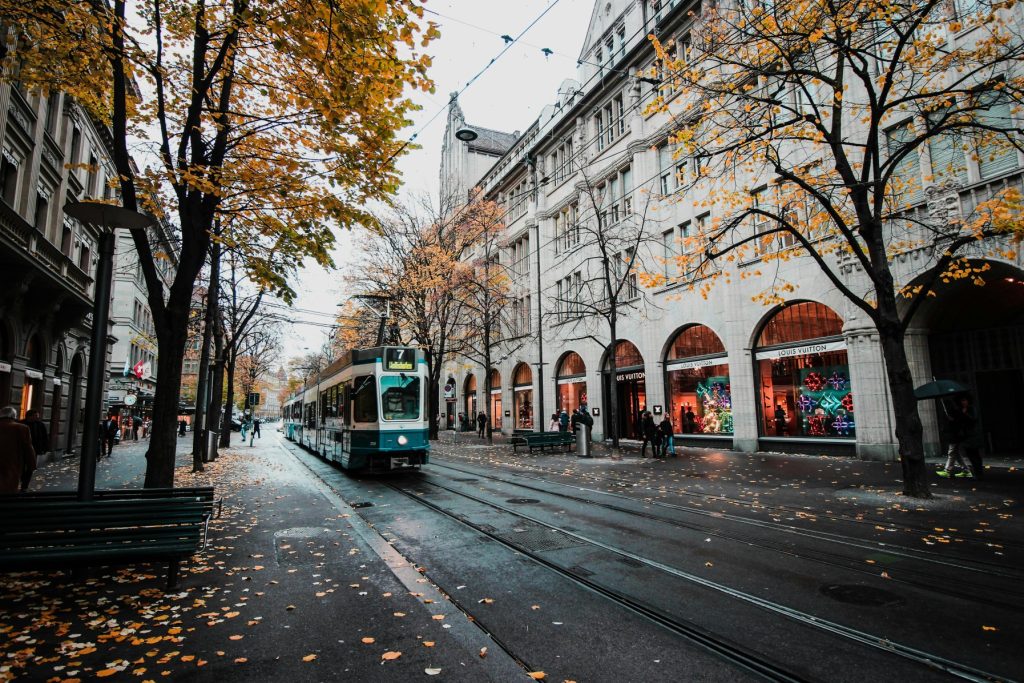
Ever thought of having hot chocolate in the Swiss Alps, or skating past pure blue lakes, or even riding the most scenic trains in the world only to be stopped with the thought of thinking “Switzerland is really too much money”? You aren’t alone. While Switzerland is known for its beauty, high prices also make it notoriously prohibitive for budget travelers. If you know how to plan—like a Switzerland trip planner—and a few tricks, then a trip, even a budget trip, to Switzerland is not only possible, but magical. What’s in this blog Why Switzerland on a Budget? Affordable Travel Tips (Flights, Stay, Food, Transport) Switzerland Trip Itinerary on a Budget (7–10 Days) Travel Essentials Why Plan with The Tarzan Way FAQs Final Thoughts Why Switzerland on a Budget? Switzerland is regularly listed among the most expensive countries in the world. Expensive doesn’t necessarily equal impossible. With options like the Swiss Travel Pass, budget accommodations, and free things to do (mountain hikes, lake views, walkable old towns), you can develop a Switzerland travel itinerary that balances cost and experiences. Using a Switzerland vacation guide or Switzerland travel guide can simplify your planning and help you design a Switzerland trip itinerary that is both cost-efficient and memorable. Cost-Saving Travel Tips ✈️ Flights Book early (6–8 months in advance) for the best deals. Consider flying into an adjacent hub like Milan and taking a budget train to get to Switzerland. Many Switzerland tour packages also include discounted airfare if booked together. 🏨 Accommodation Hostels and guesthouses start around CHF 35-50/night. Budget hotels average CHF 80-120 per stay, and better deals are available outside of Zurich or Geneva. For couples, Airbnb apartments are a base-bargain compared to hotels in the city. Switzerland honeymoon packages sometimes include cozy mountain chalets at affordable rates. 🍴 Food Restaurants will empty your wallet faster than anything, so instead: Pick up supermarket meals (Coop, Migros) for CHF 5-10. If you have a kitchen at your hostel, try your hand at self-cooking. Stay away from restaurants—street food and local bakeries are a budget-friendly lifesaver! A Switzerland holiday package that includes half-board meals can also help reduce costs. 🚆 Transport If you are visiting multiple cities, find a travel network pass called the Swiss Travel Pass if you want unlimited access to trains, buses and boats. If you are in only for a short visit, you can buy Saver Day Passes online. Of course, walking and cycling are free, but many of the cities and towns are pedestrian-only in entirety! For long stays, using a Switzerland travel planner helps compare train, bus, and car rental options. 🎡 Experiences Free walking tours in cities (Zurich, Lucerne, Bern), provided by locals. Scenic hikes and picnics by one of the countless lakes. Many museums and galleries also have free or discounted entry on certain days. A Switzerland tour guide can also help you uncover lesser-known attractions that are completely free. Budget Switzerland Trip Itinerary (7-10 Days) Sample budget itinerary for the trip of a lifetime featuring breathtaking sites and economical options: Day 1-2: Zurich – Old Town walking, Lake Zurich, museums that are free. Day 3-4: Lucerne – Chapel Bridge, Lake Lucerne, hike Mt. Rigi (included with Swiss Travel Pass). Day 5-6: Interlaken & Lauterbrunnen – valley of waterfalls, low-cost hikes, local guesthouses Day 7: Bern or Geneva – cultural areas and lakeside walks Day 8-10 (optional): Zermatt – views of the Matterhorn, hikes in the alpine, meals as picnics to save money. This could also serve as a Switzerland honeymoon itinerary for couples traveling on a budget, with warm accommodations and incredible train travel to nurture romance. A Switzerland trip guide ensures you don’t miss highlights while staying within your budget. Essentials for Travel April through June or September through October are the best times to go because of the mild weather and cheaper costs. Packing includes a reusable water bottle (tap water is safe), light layers, and comfy walking shoes. Health & Safety: Travel insurance is always a good idea, even though Switzerland is a safe place to visit. Local advice: Learn some French or German greetings; they are very helpful. Always check Switzerland travel packages to see if essentials like SIM cards, passes, or local tours are included. Why Use the Tarzan Way for Planning With so many options and unanticipated expenses, organizing a trip to Switzerland alone can be quite daunting. The Tarzan Way can help with that: A customized trip planner for Switzerland that fits your spending limit. Customized Switzerland holiday packages that include genuine local experiences. Prioritize affordability without sacrificing the highlights. They act as your Switzerland tour guide and Switzerland travel planner combined. Imagine it as your friend who is well-versed in Switzerland, easing the stress of your ideal vacation. FAQ Q. Is Switzerland expensive for travel? Yes, it makes it difficult, but with some smart planning, it will work out. Budget travelers could plan on approximately ₹7,000–10,000 per person/day. Q. Is Switzerland expensive for Indians? It is definitely more expensive than Southeast Asia or Europe, but with the budget option Switzerland travel packages available, Indians will be able to make it with a plan. Q. Is 1 lakh enough for a trip to Switzerland? For a solo traveler ₹1–1.2 lakhs is enough for a 7 day trip if you are staying in budget hotels and taking trains and eating basic meals. Q. How much is the cost for going from India to Switzerland? As of now we are looking at return flight prices between ₹40,000–60,000 for a flight from India (and these should be booked 4-6 months in advance). Q. What is the Switzerland visa fee for Indians? A Schengen visa costs about ₹7,000 for a single person. Q. What is the best month to travel to Switzerland? The best months are April–June (spring) and September–October (autumn) for good weather and prices. Q. How much is a meal in Switzerland? Expect a meal to cost around CHF 20-30 at a restaurant, but
Best Time to Visit Vietnam for Travelers in 2025
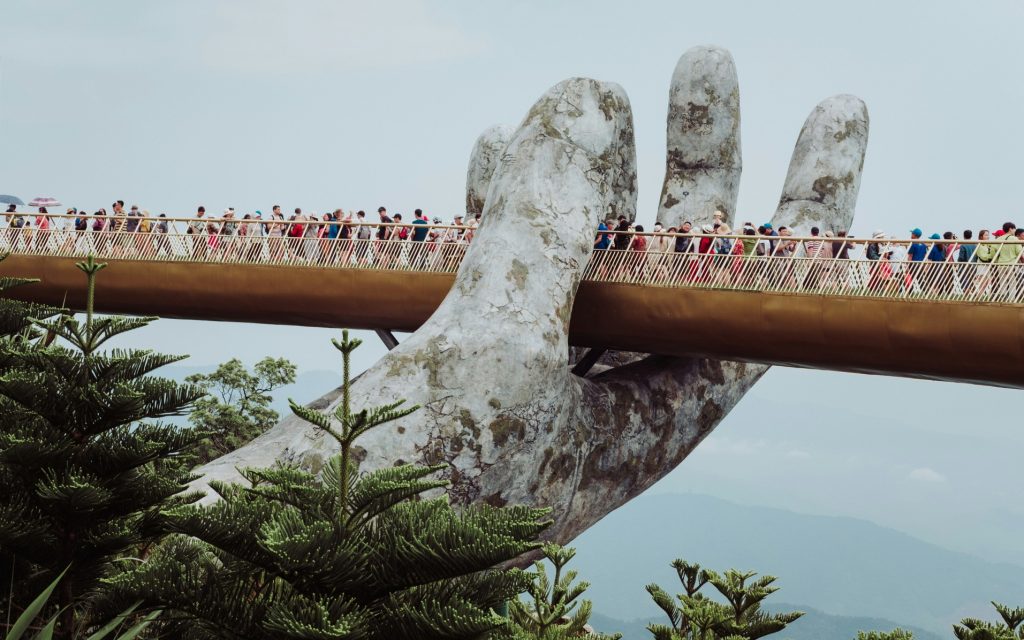
Travelling to Vietnam is an adventurous and daunting experience. Through its smoky mountainous north and its crowded cities, Vietnam has a wide variety of activities and attractions suitable for any kind of traveler. But before you dive into the details of your Vietnam travel itinerary, there’s one essential question to answer first: When is the best time to visit Vietnam in 2025? The climate in Vietnam is special in the sense that the nation extends over 1,000 miles in length between the north and the south. This forms three different climatic zones, i.e., the most auspicious seasons to visit, depending on the part of the land you are sightseeing. A properly organised trip planner to Vietnam will make your trip as fruitful as possible because they will match your activities with the best seasons. In this Vietnamese travel guide, we’ll explore seasonal highlights, regional variations, festivals, and tips to make your Vietnam trip planning smoother. Whether you’re crafting a Vietnam honeymoon itinerary, a family vacation plan, or a solo adventure, this guide has you covered. Understand the Vietnam Climate Before finalizing your Vietnam travel itinerary, it’s important to understand how weather patterns vary across the country. The regions of Vietnam are three: Northern Vietnam (Hanoi, Sapa, Ha Long Bay): There are four seasons: spring, summer, autumn, and winter. Winters (December to February) can be cold, particularly in mountainous places such as Sapa. Summers (May- August) are hot, humid, and sometimes have heavy rains. The Central Vietnam (Da Nang, Hoi An, Hue): Warm weather throughout the year tropical climate. Likely to typhoons and downpours during September and November. Southern Vietnam (Ho Chi Minh City, Mekong Delta, Phu Quoc): Warm and humid year-round. Separated into the dry season (November to April) and the rainy season (May to October). By aligning your Vietnam holiday guide with these climate zones, you can avoid weather-related disruptions while enjoying the country at its best. Best Time to Visit Northern Vietnam Northern Vietnam is a natural and cultural treasure trove, having it all, cities with their colored lights and mountains covered with mist. Ideal Months: October -April. These months are cool and comfortable, thus an ideal time to sightsee and do other activities outdoors. The months of October and November have clear skies and would be the best moments to be taken around Ha Long Bay or traveling in Hanoi. During winter months (December to February), there is a different kind of appeal, and in Sapa, it may be misty and occasionally there is a snowfall in the higher places. The month of spring (March to April) is lovely as flowers begin to bloom and there are celebrations. Must-Do Activities: Visiting the ancient streets and cuisine of Hanoi. Take a romantic Ha Long Bay cruise, perfect for couples on a Vietnam honeymoon itinerary. Hike across the Sapa terraced rice fields to have stunning scenery. Pro Tip: Tet, the Lunar New Year in Vietnam, generally occurs in the late month of January or February. It is a spectacular cultural adventure, and transportation and hotels are already booked several months beforehand, so reserve early. Central Vietnam Best Times to Visit The place is a country that boasts of cultural landmarks, historic cities, and beautiful beaches. Most suitable Months: February to August. It is also the time of year when the weather in the country is dry and sunny, and therefore, beach vacations and outdoor exploration are perfect. This would also be a perfect opportunity to explore Hoi An Ancient Town and the imperial monuments of Hue without fear of getting drenched by rain. Hoi An Lantern Festival, conducted every month, is particularly magical during clear weather. Must-Do Activities: Take a break on immaculate beaches such as My Khe Beach in Da Nang or An Bang Beach in Hoi An. Stroll in the by-lanes of Hoi An, illuminated with lanterns. Hue, the royal city of Vietnam, with the Imperial City and royal tombs. Visit My Son Sanctuary, which is also a UNESCO World Heritage site displaying the ancient Cham ruins. Travel Tip: Central Vietnam is prone to typhoons and flooding, especially in September to November, and so should not be visited at all. Best Time to Visit Southern Vietnam Southern Vietnam is a combination of bustling city life and all-natural immersion. Best Months: November-April. These are dry months in the year, and the weather is sunny, ideal in case people need to travel to Ho Chi Minh City, have boat tours in the Mekong Delta, or go to the beaches at Phu Quoc Island. Must-Do Activities: Tour the Tan Cu Chi Tunnels and gain knowledge about the history of the Vietnam War. Explore the floating markets of the Mekong Delta to have a glimpse of the local life. It is also about unwinding on the pristine white-sanded beaches of Phu Quoc and having a taste of seafood. Travel Tip: The rainy season lasts between May and October, although showers are normally brief and appear in the late afternoon thus they will not get your plans spoiled entirely. Month-by-Month Guide for 2025 Here’s a quick breakdown to help with your Vietnam travel planner: January: The Northern part is cool and dry, and festal Tet celebrations are on their way. February: Good in every part, good time to get outdoors. March: Hot and sunny, great in central Vietnam, and green hiking in the north. April: Beautiful climate all over the country, wonderful to sightsee and explore the outdoors. May: The rainy season begins in the south, but central and northern areas are always good places to visit. June-July: It is the high season of the beach season in central Vietnam, but somehow it becomes crowded. Sample Vietnam Honeymoon Itinerary The diversity of Vietnam makes it a great honeymoon country. Here’s a suggested 10-day Vietnam honeymoon itinerary: Days 1-3: Begin in Hanoi and explore the cultural sites, and spend 3 days on a luxury cruise in Ha Long Bay. Day 4-5: Fly to Da Nang, wander Hoi An with its romanticising lantern-lit
The Hidden Gems of Ladakh: Must-See Places Most Tourists Miss
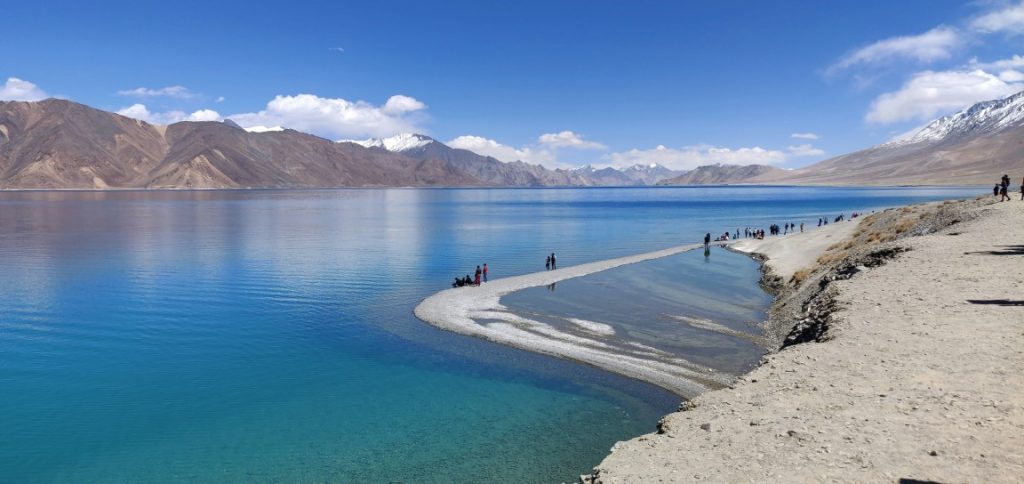
Ladakh is a stunner. But while most travelers flock to Pangong Lake, Nubra Valley, and Magnetic Hill, there’s a whole other side to this high-altitude wonderland that rarely makes it to Instagram feeds. If you’re planning your Ladakh trip and want to go beyond the usual tourist checklist, you’re in for a wild ride. This guide uncovers the offbeat, soul-touching, and hidden gems of Ladakh that even seasoned backpackers sometimes miss. Whether you’re on a Leh Ladakh road trip or seeking the best Ladakh trekking routes, here are the hidden gems that deserve a top spot on your Ladakh itinerary. 1. Turtuk—The Unexpected Surprise Near the Border Turtuk legitimately feels like you’ve walked into a different country. This quiet little village tucked away near the Indo-Pak border is all about Balti vibes, cute stone houses, and apricot orchards that smell like heaven. It’s a culturally rich pocket that most tourists totally miss on their Ladakh road trip. Pro Tip: If you’re in Ladakh around July or August, don’t sleep on the apricot harvest here. They’re chef’s kiss good! Add Turtuk to your Ladakh trip itinerary as a scenic detour from Nubra Valley; it’s worth every dusty kilometer. 2. Sumur—Soulful and Still in Nubra Valley Sumur is your go-to if you want to slow down and soak in the peaceful side of Nubra Valley. It’s got these beautiful golden fields, quiet monasteries (hello Samstanling!), and wholesome homestays where the chai flows endlessly. Pro Tip: Book a homestay and chat with the locals over butter tea. It’ll give your Ladakh trip major heart and soul. Perfect spot to recharge if your Leh Ladakh road trip has been a whirlwind. 3. Uleytokpo—Where the Stars Go Wild Uleytokpo is low-key the most underrated stargazing spot in Ladakh. It’s quiet and scenic, and you’ll probably see more stars than people here. Plus, it’s a sweet launchpad if you’re eyeing some easy trekking in Ladakh without going full hardcore. Pro Tip: Plan your visit around a new moon night. Trust me, the Milky Way views are insane. Don’t forget your camera, and drop this into your Ladakh travel itinerary if you’re big on cosmic vibes and night-sky photography. 4. Tso Moriri—Pangong’s Quieter Sister Pangong gets all the hype (and tourists), but Tso Moriri is where you go to actually breathe. Tucked high up at over 4,500 meters, this serene lake is wrapped in silence, snow-capped mountains, and zero crowds. No honking, no distractions, just pure vibes. If you’re crafting your Ladakh trip planner, trust us: Tso Moriri is the unplugged detox you didn’t know you needed. Pro Tip: Altitude here is no joke. Stay a night in Leh before heading up. Oh, and pack thermals even in summer. Add it to your Ladakh travel package for that offbeat glow-up. 5. Dha-Hanu – The Land of the Aryans Sounds wild, right? This hidden valley is home to the Brokpa tribe folks, who are believed to be actual descendants of Alexander the Great. Their features, traditions, and language are totally unique. Visiting Dah-Hanu is like stepping into a parallel timeline, one that most travelers skip in their usual Leh Ladakh tour itinerary. Pro Tip: Be respectful; this is a sacred cultural zone. Bring some dried fruits as gifts when staying in the village; it’s a kind gesture and opens up conversation with the locals. A total must for your Ladakh sightseeing plans. 6. Chuchot Yokma – Live the Ladakhi Way Who says you need to go remote to go local? Just a short drive from Leh, Chuchot Yokma is where you can hang with locals, help out on farms, and eat home-cooked thukpa with aunties who’ll treat you like family. It’s the kind of Ladakh sightseeing that doesn’t make it to Instagram reels but stays in your memory forever. Pro Tip: Visit during sowing or harvest season and get your hands dirty; you’ll earn your lunch and stories for life. Drop it into your Ladakh travel guide if authenticity tops your list. FAQs: Hidden Gems of Ladakh Q1. Is it safe to travel to these offbeat places in Ladakh? Yes, most of these locations are safe with basic infrastructure. However, always check with locals and stay updated on weather conditions. Q2. Do I need special permits for places like Turtuk or Dha-Hanu? Yes, Inner Line Permits are required for border areas like Turtuk and Dha-Hanu. They’re easy to obtain in Leh through your hotel or travel agency. Q3. What’s the best time to explore hidden spots in Ladakh? May to September is ideal. Roads are open, and the weather is traveler-friendly. Q4. Can these places be added to my Leh Ladakh tour packages? Absolutely! Custom Leh Ladakh packages often allow flexibility. Just discuss your Ladakh trip plan with your tour operator. Q5. Are these spots included in regular Ladakh travel guides? Not always. That’s why this blog is your cheat code to discovering the best places in ladakh beyond the mainstream. Final Thoughts: Time to Go Beyond the Map The magic of Ladakh isn’t just in the big names; it’s in the tiny villages, the quiet valleys, and the stories no one’s telling yet. Whether you’re crafting your Ladakh travel itinerary, looking for a Ladakh trip package, or booking Leh Ladakh tour packages, don’t sleep on these gems. And if you’re feeling a bit overwhelmed with planning your Leh Ladakh trip, The Tarzan Way’s curated Ladakh tour itineraries can help you unlock Ladakh like a true explorer. Let’s make your trip unforgettable, one hidden trail at a time.
Thailand Tour Guide 2025: Top Places to Visit & Expert Tips
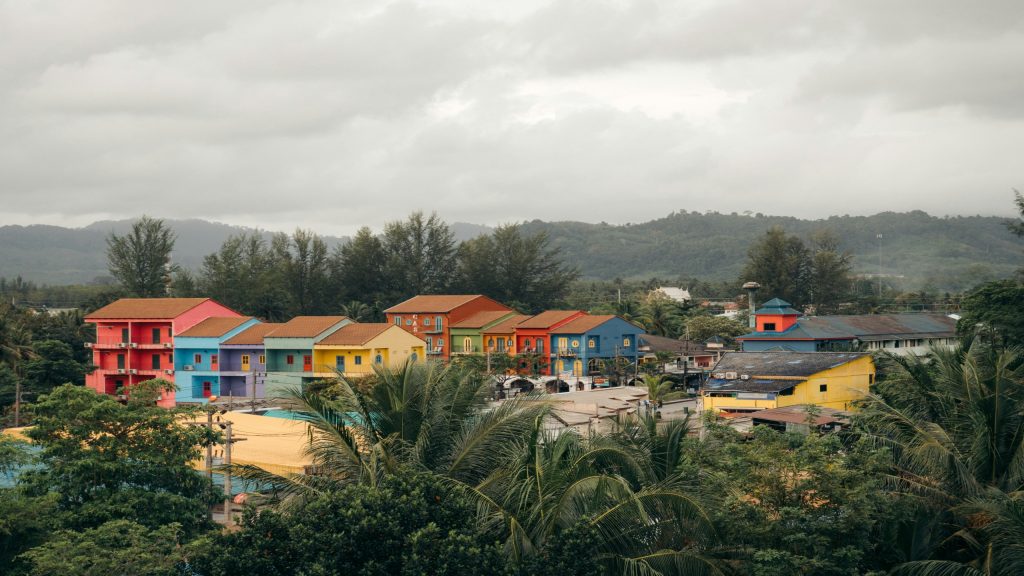
Planning a trip to Thailand? You’re in for something amazing. Whether it’s your first time or you’ve been before, Thailand’s got that perfect mix of chill beaches, wild cities, incredible food, and culture that hits different. This guide has everything you actually need, from top places to visit and helpful tips to a simple Bangkok itinerary to get you started. No pressure, no overplanning, just a solid starting point for your 2025 adventure. Think of it as your low-key Thailand trip planner from someone who’s just as excited about the journey as you are. Top Places to Visit in Thailand in 2025 1. Bangkok—The City That Never Sleeps If you’re planning a Bangkok, Thailand trip and skipping Bangkok… rethink that. It’s loud, a little wild, but honestly, kind of magical. One minute you’re walking through a 200-year-old temple, the next you’re sipping cocktails on a rooftop 40 floors up. It just works. Places you can’t miss: Wat Arun at sunset—trust me, it’s unreal Wat Pho for the massive Reclining Buddha Chatuchak Market if you’re down for cheap clothes, souvenirs, and snacks every few feet Tip: Don’t mess with Bangkok traffic; it’s brutal. Stick to the BTS Skytrain or catch a riverboat. It’s faster, cheaper, and kind of fun. Sample 3-Day Bangkok Itinerary: Day 1: Hit the big temples and take a river cruise Day 2: Shop ‘til you drop + street food crawl (save room for mango sticky rice) Day 3: Do a chill day trip either to Ayutthaya (ancient ruins) or a floating market Bangkok can feel overwhelming at first, but once you settle in, you’ll get why it’s a must on every Thailand travel planner. Just roll with the chaos that’s part of the charm. 2. Chiang Mai – Slow Days, Good Energy Chiang Mai feels like a deep breath after the buzz of Bangkok. It’s up in the mountains, way more laid-back, and kind of perfect if you’re into nature, temples, and slow mornings with good coffee. You’ll spend your days wandering through night markets, visiting peaceful temples, and maybe even hanging out with elephants (the nice, ethical kind—no rides, just love). What’s worth your time: Doi Suthep Temple—the view from the top is unreal Local night bazaars—perfect for souvenirs and endless street food An elephant sanctuary And if you’re there in November, catch the Yi Peng Lantern Festival with floating lanterns everywhere. It’s one of those moments you’ll never forget. Tip: November is the sweet spot. Cooler temps, fewer tourists, and the whole city just feel alive during festival season. Chiang Mai isn’t about rushing around; it’s more like… take it slow, enjoy the vibes, and let the place grow on you. If you’re planning your Thailand holiday guide and want something meaningful (and super chill), this is your place. 3. Phuket – Sun, Sea & Zero Regrets Phuket’s the kind of place that makes you want to ditch your return ticket. It’s all palm trees, blue water, and a “let’s just stay forever” vibe. Whether you’re there to party, explore, or fully unplug, it just works. You’ll probably end up at Patong Beach at least once. It’s loud, messy, and kind of chaotic… but also kind of fun. If that’s not your scene, no worries; there are way more peaceful spots too. Definitely take a boat trip out to the Phi Phi Islands. Yeah, it’s touristy, but it’s also insanely beautiful. And at some point, go visit the Big Buddha. It’s quiet, up on a hill, and the views over the island are actually kind of surreal. Tip: Stay on the west side of the island if you’re into sunsets and want a break from the noise. The beaches are calmer, and the vibes are unbeatable. Phuket’s a must for any Thailand trip planner, especially if you’re looking to mix a little adventure with a whole lot of chill. 4. Krabi—Straight-Up Coastal Magic Krabi is a screensaver IRL. You’ve got these giant limestone cliffs, crazy blue water, and beaches that are somehow both chill and dramatic at the same time. Musts: Railay Beach—no roads, just boats and jaw-dropping views Ao Nang—super chill, good food, easy vibes Island hopping—hit up Koh Phi Phi or Koh Lanta (yes, both if you can) Tip: Book the early boat tours; it’s quieter, cooler, and ideal for stunning photos. If your Thailand itinerary doesn’t include Krabi, it’s time to reconsider. The experience is nothing short of cinematic. 5. Pai—Your Soft Life Era Pai is tiny, peaceful, and kind of magical. It’s the place you go when you’re tired of being “on” all the time. No big plans, no loud crowds—just mountains, fresh air, and a slow pace that hits different. What you’ll find: Hot springs, waterfalls, sleepy cafés, people playing guitar at sunset, and the kind of quiet that makes you actually breathe. It’s not flashy, and that’s exactly the point. Tip: Rent a scooter and just cruise around. No map needed. Every random road leads to something pretty. Pai won’t be for everyone. But if you’re craving calm, creativity, or just a break from the noise, this is your sign to add it to your Thailand trip guide. FAQs About Traveling to Thailand (2025 Edition) 1. What’s the best time to visit Thailand? Thailand is great year-round, but the best weather is from November to February—cooler, drier, and perfect for sightseeing or beach-hopping. A good Thailand vacation planner will help you avoid the rainy season in the south and extreme heat in the north. 2. Do I need a visa to travel to Thailand? Depends on your passport. Many countries get a 30-day visa exemption, but always double-check. A solid Thailand travel planner or Thailand tour guide should include up-to-date visa info. 3. Is Thailand expensive for travelers? Not really. Thailand can be super affordable, especially for food, transport, and accommodation. Whether you’re going luxe or backpacker, a good Thailand trip planner can help you stick to your budget. 4. Is it safe to travel solo in Thailand? Yes,
The Andaman & Nicobar Islands Railway Station: A Hidden Gem in the Indian Ocean
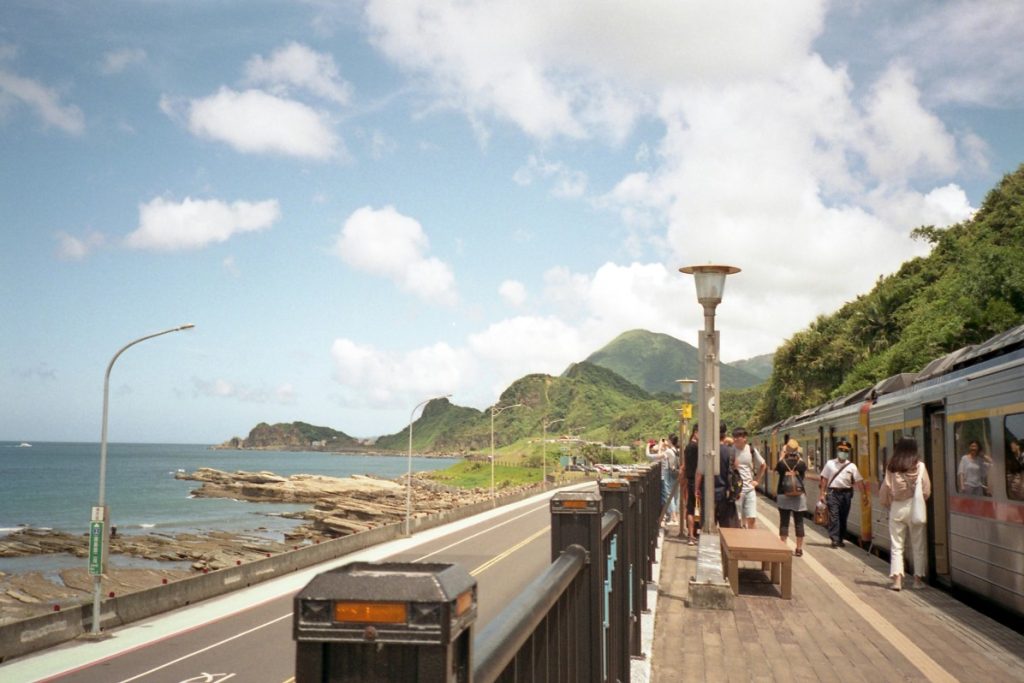
Introduction: Where Trains Meet the Sea When travelers think of the Andaman & Nicobar Islands, images of turquoise waters, swaying palm trees, and coral reefs come to mind. What few know is that there is a unique landmark that marries architecture, culture, and nature – the Andaman & Nicobar Islands Railway Station. Picture yourself standing on the platform of a railway station, where the rhythm of the trains dances to the melody of waves, coconut palms sway in the sun and the salty sea breeze drifts outside. This station is more than just the trains that pass through it – it provides a glimpse into the soul of the islands. For travelers arriving in the archipelago via Port Blair, many travelers find themselves extending their stay longer than planned, enamored by the island spirit and charm of the station. If you are looking for hidden gems on the islands and to experience the Andaman like a local, The Tarzan Way can tailor a bespoke itinerary that incorporates the railway station as part of the adventure itinerary along the beaches, diving trips and cultural experiences. Why the Andaman Railway Station is Special Eco-Friendly Infrastructure: Solar panels, rainwater harvesting, and sustainable materials preserve the environment. Architecture Blending with Nature: Thatched roofs, wooden beams, and artisan carvings reflect local culture. Scenic Views: Platforms overlook pristine beaches, coconut groves, and coral-rich waters. Cultural Hub: Friendly staff and occasional folk performances make the station lively. Photography Heaven: Ideal for travelers who want to capture the island’s beauty. Pro Tip: Combine a visit to the station with The Tarzan Way’s curated Andaman itineraries for a complete travel experience. Design and Architecture: A Harmony of Tradition and Sustainability The station is designed to honor the natural environment while showcasing Nicobari and Andamanese culture: Materials: Local timber, stone, and sustainable composites. Roofing: Thatch-inspired design to blend with the coastal environment. Energy: Integrated solar panels and rainwater harvesting. Landscaping: Native plants and flora surrounding the station. This makes it one of the unique stations in Andaman, demonstrating how infrastructure can harmonize with nature rather than disrupt it. Cultural Experiences at the Station One of the most enchanting aspects of this station is the human touch. Travelers can interact with locals, learn island stories, and enjoy spontaneous cultural moments: Folk music performances on shaded platforms Storytelling by station staff about Andamanese culture and history Local artisan displays showcasing traditional handicrafts Even if trains aren’t running, the station itself offers a cultural journey. This blog ensures travelers don’t miss these authentic experiences while exploring Andaman’s hidden gems. Scenic Beauty Around the Station The station isn’t just an architectural marvel—it’s surrounded by breathtaking scenery: White sandy beaches stretches into the horizon Coconut groves rustle in the sea breeze Turquoise waters and coral gardens perfect for diving and snorkeling Ideal sunset and sunrise spots for photography Many visitors combine their station visit with nearby beaches, taking in both natural beauty and local culture. Nearby Attractions and Activities Whether you’re a beach lover, a diver, or a cultural enthusiast, the station is a perfect starting point: 1. Beaches Short walks to secluded shores Relaxation and swimming Sunset views over the Indian Ocean 2. Coral Reefs and Diving Guided diving trips to Havelock and Neil Islands Snorkeling coral Andaman tours for beginners Glass-bottom boat rides for non-swimmers 3. Cultural Tours Local markets and handicraft villages Folk music and storytelling events Interaction with artisans 4. Eco-Tourism Learn about sustainable building and eco-friendly practices Observe how the station blends with the environment Responsible travel tips included in The Tarzan Way itineraries Pro Tip: Plan your station visit along with eco-tours and diving trips via The Tarzan Way, which ensures every activity respects local culture and nature. Travel Information Topic Details Location Near Port Blair, Andaman & Nicobar Islands Best Time to Visit October – May (dry season, calm seas) Entry Open for sightseeing, photography, and cultural experiences Transport Taxi, local bus, or combination of ferry and road for nearby islands Nearby Hotels Eco-lodges and resorts recommended in Andaman travel guides For more information about Andaman & Nicobar Islands you can checkout our Blogs: Are Andaman and Nicobar Coral Islands? How were Andaman and Nicobar Islands Formed? Andaman and Nicobar Islands: Tropical Paradise Reimagined. FAQs Q. What is the Andaman & Nicobar Islands Railway Station? It is a unique cultural and architectural landmark in the Andaman Islands, blending sustainable design with natural beauty. Q. Where is the Andaman & Nicobar station located? The station is situated near Port Blair, making it easily accessible for travelers before exploring Havelock, Neil, or other islands. Q. Is it operational for trains? While it resembles a railway station, it primarily functions as a cultural and tourist site rather than serving regular train operations. Q. What makes it eco-friendly? The station uses solar power, rainwater harvesting, native plants, and sustainable materials to minimize environmental impact. Q. Can visitors enter for sightseeing? Yes, visitors can explore the station, take photographs, enjoy cultural activities, and admire scenic ocean and beach views. Q. Are there nearby attractions? Nearby attractions include pristine beaches, coral reefs, local markets, cultural centers, and eco-tourism activities for travelers. Q. What cultural experiences are offered? Travelers can enjoy folk music, storytelling by locals, artisan displays, and insights into traditional Andamanese culture. Q. How do I reach the station? Visitors can reach the station via taxi, local bus, or a combination of ferry and road transport when coming from nearby islands. Q. When is the best time to visit? The ideal time to visit is October through May, during the dry season, for calm seas, clear skies, and perfect sightseeing. Q. Can beginners enjoy diving and snorkeling? Yes, beginners can safely enjoy snorkeling, guided diving tours, and glass-bottom boat rides to explore the vibrant reefs. Why Visit the Andaman & Nicobar Islands Railway Station? Experience Andaman architecture blending with nature Enjoy eco-conscious design while exploring tropical beauty Interact with locals and learn island culture Visit nearby beaches, coral reefs, and markets
How to Plan the Perfect Delhi to Manali Road Trip
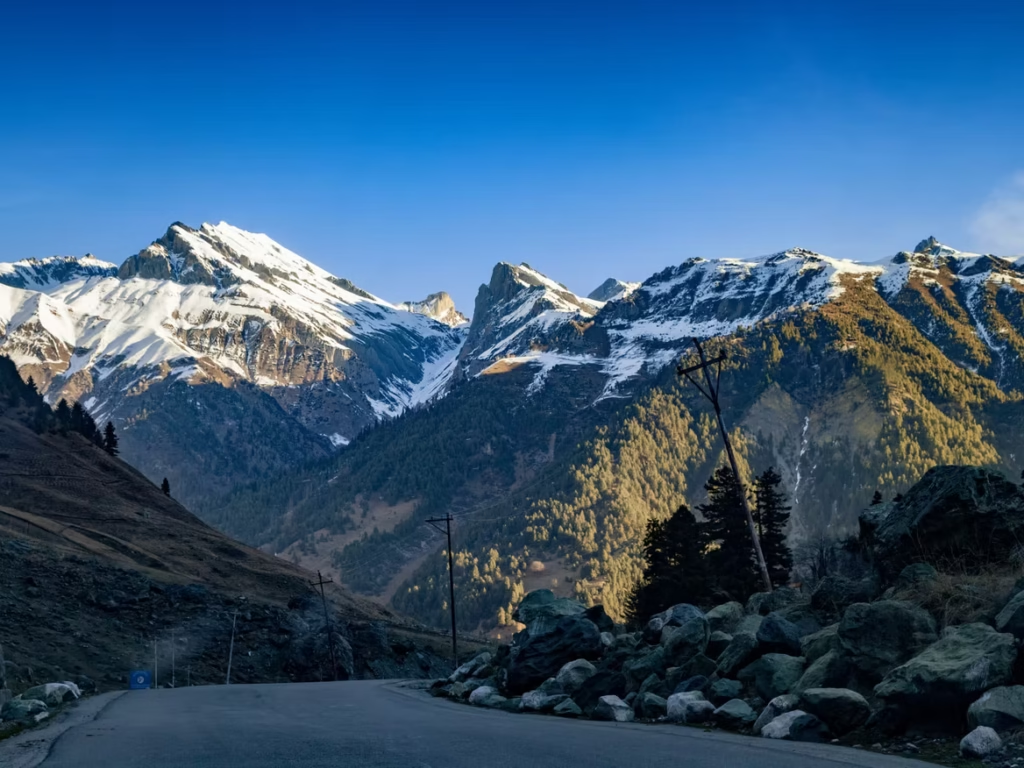
The road trip from Delhi to Manali is one of the best adventures in India. Imagine cruising along the winding highways with the towering Himalayas surrounding you; stopping at small dhabas for warm, buttery parathas; and opening the windows to let in the crisp mountain breeze. This isn’t just a drive, it’s an experience encompassing food, history, culture, and visually stunning landscapes. The distance from Delhi to Manali is about 470 km and can take anywhere between 10-12 hours. You will pass through picturesque towns in Himachal, see historic temples, and drive through scenic valleys. Smart planning will allow you to craft your Delhi to Manali itinerary into either an adventure packed with thrill or a well-deserved retreat. This guide outlines the best routes, breaks, packing advice, and safety tips for a road trip filled with beautiful scenery, food, and long-lasting memories. What’s in this blog Why Take a Road Trip from Delhi to Manali? Best Time to Travel Planning Your Route Packing and Preparing for the Trip Best Places and Stops on the Way Suggested Delhi to Manali Road Trip Itinerary Travel Essentials and Safety Tips Where to Stay Along the Route Why Plan with The Tarzan Way FAQs Final Thoughts Why Take a Road Trip from Delhi to Manali? Manali is one of the most loved hill stations in India; however, the adventure begins long before you reach the destination. If you drive from Delhi, you get to experience Scenic diversity – You go from Delhi with all its chaos, to flat farmland in Haryana and Chandigarh’s gardens to the mountains of Himachal. Freedom & flexibility – Stop where you want, eat the food that tempts you, and detour into remote villages. Unforgettable bonding – Long drives mean stories, laughter, memories, and experiences with your fellow travelers. Adventure factor – Hairpin bends, high passes, and spontaneous pitstops mean that the journey is as thrilling as the destination. Unlike a short easy flight, the road allows you to slow down and truly feel the spirit of Himachal. Best Time to Travel Timing really can impact your smooth roadway trip from Delhi to Manali. March–June – Great weather to experience and do fun activities. July–August – Torrential rains make the roads slippery and prone to landslides. No bueno. September–November – The weather is crisp, the air is clear and the crowd is smaller. December–February – A beautiful blanket of snow, but riskier driving option because of icy roads. If this is your first trip, I’d recommend a trip in March–June or September–November for a safer and comfortable trip. Planning Your Route The distance from Delhi to Manali is about 470 km, which can take 10-12 hours for a direct route. But the best part of this trip is to part it into a leisurely 3-5 days where you can visit towns along the way. Common Route Delhi → Murthal → Panipat → Ambala → Chandigarh → Bilaspur → Mandi → Kullu → Manali Suggested Stopovers Murthal – well known for parathas, and dhaba culture. Chandigarh – well known for architecture, gardens and museums. Kalka & Solan – great hillside views. Kullu – with apple orchards, temples, and river rafting. You will get the most food, culture, and relaxation on your trip by having 2-3 stopovers. Packing and Preparing for the Trip Packing smart makes the difference between a nice road trip and a stressful one. Things to consider: Clothes – lightweight cottons for the daytime, heavier jackets for the evening. Travel gear – sunglasses, hats, power banks for the trip, and car chargers. Snacks – buy dry fruits, sandwiches, some chips, and lots of water. Medical kit – buy basic medicines, motion sickness tablets, and band-aids. Car supplies – spare tyre, basic toolkit, torchlights, and extra fuel cans. Pro Travel Tips: Servicing of your car should be done one week prior to your trip (e.g. battery check, brakes check, and tyres check). Make sure to create playlists for the length of your trip, to keep your spirits high on longer stretches. Assign roles in the planning. Having a navigator, photographer and DJ will engage everyone. Best Places and Stops on the Way There are so many stops you can make while driving along the Delhi-Manali Highway. It’s full of places you will want to stop over! In and Around Delhi Sadar Bazaar – chaotic, colorful, and full of tasty street food. Chole Bhature breakfast – a classic North Indian kickstart. Murthal (NH44) Renowned for giant stuffed parathas with butter and lassi. Kurukshetra & Panchkula Kurukshetra temples – deep dive into India’s mythology. Nada Sahib Gurudwara – a peaceful spiritual stop. Chandigarh Explore the Rock Garden, Rose Garden, and museums. Perfect place for an overnight halt. Shimla & Kasauli (Optional detour) Colonial architecture, Mall Road, toy train rides. Approaching Manali Kullu – apple orchards, rafting in Beas River, temples. Solang Valley – adventure hub for paragliding and skiing. Rohtang Pass – if open, this snow paradise is a must-visit. In Manali Stroll along Mall Road. Visit Hidimba Devi Temple. Cozy up in local cafes with mountain views. Suggested Delhi to Manali Road Trip Itinerary Here’s a basic 5-day road trip plan: Day 1: Delhi → Chandigarh (250 km, approx. 5–6 hour drive). After a day of visiting Chandigarh’s gardens, stay overnight at a hotel. Day 2: Chandigarh → Shimla/Kasauli (90-120 km, approx. 3-4 hour drive). Explore Shimla or Kasauli with their beautiful hills and colonial architecture; stay overnight. Day 3: Shimla/Kasauli → Mandi/Kullu (180 km, 6–7 hour drive). See the beautiful scenic drives, apple orchards, and temples on this drive and stay overnight. Day 4: Kullu → Manali (40 km; 2 hour drive). Arrive in Manali; spend the day exploring Mall Road and Hidimba Temple. You can stay here two nights – the accommodation options are plentiful. Day 5: Around Manali → Take day trips from Manali to Solang Valley or Rohtang Pass (if open). Either way, there will be wonderful scenery and adventure. This trip can be done in



